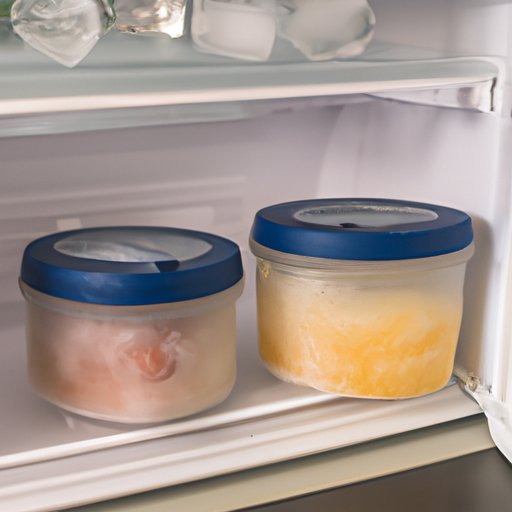Introduction
Freezer burn is a common issue that affects food stored in the freezer for long periods of time. It is caused by dehydration or oxidation of the food, which can result in discoloration, dryness, and off-flavors. Fortunately, there are steps you can take to avoid freezer burn and keep your frozen food safe and delicious.
Definition of Freezer Burn
Freezer burn occurs when moisture is lost from the food due to exposure to cold air. This causes the food to become dry, hard, and discolored. The texture of the food may also change, becoming tough or crumbly. In addition, flavors may become dull or off-tasting. Freezer burn does not make food unsafe to eat, but it can affect the taste and texture.
Reasons Why Freezer Burn Happens
There are several reasons why freezer burn can occur. One of the most common causes is improper food packaging. If food is not stored in an airtight container or wrapped tightly in freezer-safe materials, it will be exposed to too much cold air, leading to freezer burn. Another cause is storing food in large portions instead of smaller ones. Large portions are more susceptible to freezer burn because they are more exposed to cold air.

How to Avoid Freezer Burn
To prevent freezer burn, there are several steps you can take. Here are some tips to help you keep your food fresh and free of freezer burn.
Use Airtight Containers and Wrap Food Tightly in Freezer-Safe Materials
Using airtight containers and wrapping food tightly in freezer-safe materials such as aluminum foil, plastic wrap, or freezer bags can help protect food from air exposure. Make sure to press out any excess air before sealing the container or wrapping the food. This will help keep the food fresh and reduce the risk of freezer burn.

Store Food in Small Portions
Storing food in smaller portions instead of large ones can help reduce the risk of freezer burn. When food is divided into smaller portions, it is less exposed to cold air and therefore less likely to suffer from freezer burn. You can also use individual servings to make thawing and reheating easier.
Make Sure Your Freezer Temperature is Set at or Below 0°F
In order to avoid freezer burn, it’s important to make sure your freezer temperature is set at or below 0°F. This will help ensure that food stays frozen and protected from air exposure. To check the temperature, you can use a refrigerator thermometer.
Avoid Overcrowding Your Freezer
Overcrowding your freezer can lead to warmer temperatures, which can increase the risk of freezer burn. Make sure to leave enough space between items so that air can circulate freely. This will help maintain a consistent temperature and reduce the risk of freezer burn.

Allow Cooked Food to Cool Before Freezing it
Before freezing cooked food, it’s important to allow it to cool completely. If hot food is placed directly in the freezer, it can raise the temperature of the freezer, leading to increased risk of freezer burn. To speed up the cooling process, you can place the food in shallow containers or divide it into smaller portions.
Conclusion
Freezer burn is a common issue that affects food stored in the freezer for long periods of time. However, it can be avoided by taking certain steps such as using airtight containers, wrapping food tightly in freezer-safe materials, storing food in small portions, making sure the freezer temperature is set at or below 0°F, avoiding overcrowding the freezer, and allowing cooked food to cool before freezing it. With these tips, you can keep your frozen food safe and delicious.
If you find yourself dealing with freezer burn, there are additional resources available to help. The USDA has a website with information on food safety and storage, including how to prevent freezer burn. There are also various online guides and videos that provide step-by-step instructions for proper food storage.


